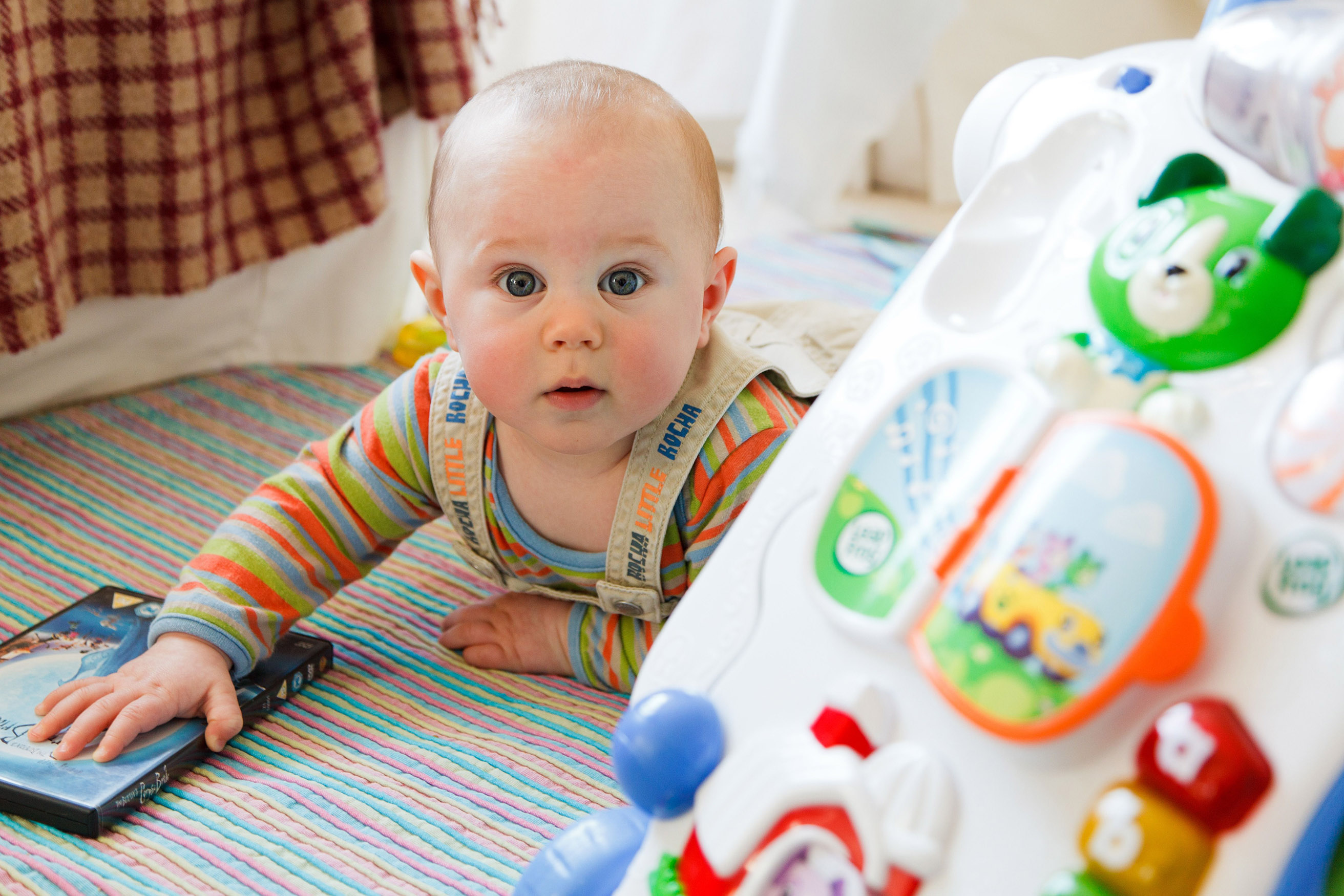After getting face to face, the next step is for your child to lead the interaction.
Why follow your child's lead?
Communication is a two-way street. By following your child’s lead you are recognising their need for expression. Watching and waiting will help you interpret your child's needs, feelings and interests and give them the opportunity to express these.
It is often easier and faster for a parent to lead their child through routines. However, if a parent always directs, the child doesn’t feel that they have much impact on their world. Examples of a parent leading routine may include the parent giving their child a drink before they ask for it or turning on the water tap when the child can start to learn to do it on their own.
On the other hand, if the parent waits for the child to initiate an interaction (e.g. letting the child try to turn on the water tap on their own), the child begins to understand what their role as an initiator can be.

Letting your child lead encourages them to initiate a back and forth interaction with you. This allows them to:
- hear a variety of words
- build their attention skills
- start the interaction
- take turns
- express themselves
- practice using words and gestures
- build their confidence to communicate
Tips for letting your child lead:
Once you are face to face with your child, it is important to wait and allow your child to start an interaction or respond to you. You are sending your child a clear message that your turn is over and they are expected to take the next turn. Your child will learn they have control in communication too.
Following your child’s lead may look like:
- Watching your child’s focus of attention, facial expressions and body language
- Waiting to give your child time to express him/herself
- Listening carefully to your child’s attempts to communicate
- Giving him/her your undivided attention

While you are watching and waiting:
Look to see what your child is interested in. You can then respond with shared interest which will increase their motivation to communicate.
Use facial expressions and body language in the following ways:
- Stop talking and stay quiet
- Lean in towards your child to show that you are listening
- Look at your child expectantly
- Open your eyes and lift your eyebrows
- Nod and smile to encourage your child to continue
- Point to what your child is interested in
- Wait longer than usual (up to 10 seconds)
Joining in a child lead interaction:
When you are following your child’s lead you can:
- Join in and play.
- Imitate their actions, gestures, sounds and words.
- Interpret their message (e.g. if a child shakes a container - adult responds "open?").
- Make a comment.
- Model language (you may need to model words so that your child can hear what to say).
- Occasionally ask a question.
When your child initiates any kind of interaction with you, it is important to respond immediately to acknowledge their communication attempt. Responding with enthusiasm will build your child’s confidence and encourages them to continue the interaction. If you are unsure of their message, look out for clues by following their eye gaze, copying their facial expressions, sounds or words.
Let's watch...
The parent talks the whole time.
They didn’t wait.
Let's break it down...
Let's watch...
Up to 10 seconds
Uses sounds and words to communicate
Keeps the interaction going by responding and then waiting again
Let's break it down...
Caregiver Self-reflection
At home:
- When you are playing with your child, do you wait for your child to start the interaction (either verbally or non-verbally) or do you find yourself talking and filling silences?
- What could you do to allow your child to lead?
- What does your child do to lead the interaction?
- How do you know your child has taken a turn?
- What do you do to follow your child’s lead?
- How do you respond to your child?
- If your child doesn’t start the interaction, how could you create the opportunity for them to lead?




